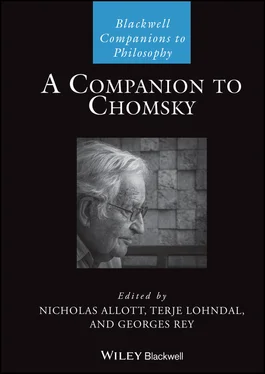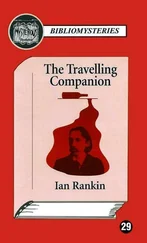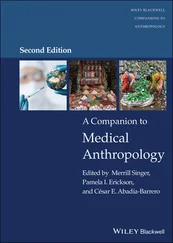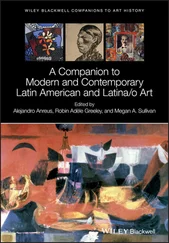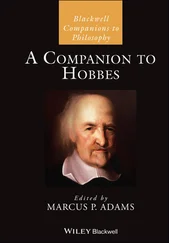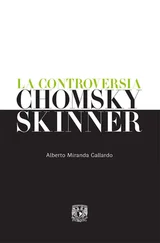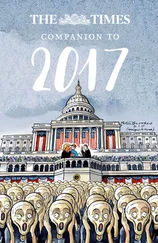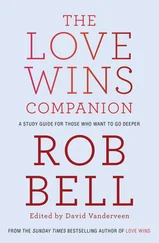A Companion to Chomsky
Здесь есть возможность читать онлайн «A Companion to Chomsky» — ознакомительный отрывок электронной книги совершенно бесплатно, а после прочтения отрывка купить полную версию. В некоторых случаях можно слушать аудио, скачать через торрент в формате fb2 и присутствует краткое содержание. Жанр: unrecognised, на английском языке. Описание произведения, (предисловие) а так же отзывы посетителей доступны на портале библиотеки ЛибКат.
- Название:A Companion to Chomsky
- Автор:
- Жанр:
- Год:неизвестен
- ISBN:нет данных
- Рейтинг книги:3 / 5. Голосов: 1
-
Избранное:Добавить в избранное
- Отзывы:
-
Ваша оценка:
- 60
- 1
- 2
- 3
- 4
- 5
A Companion to Chomsky: краткое содержание, описание и аннотация
Предлагаем к чтению аннотацию, описание, краткое содержание или предисловие (зависит от того, что написал сам автор книги «A Companion to Chomsky»). Если вы не нашли необходимую информацию о книге — напишите в комментариях, мы постараемся отыскать её.
Companion
Companion
A Companion to Chomsky
A Companion to Chomsky — читать онлайн ознакомительный отрывок
Ниже представлен текст книги, разбитый по страницам. Система сохранения места последней прочитанной страницы, позволяет с удобством читать онлайн бесплатно книгу «A Companion to Chomsky», без необходимости каждый раз заново искать на чём Вы остановились. Поставьте закладку, и сможете в любой момент перейти на страницу, на которой закончили чтение.
Интервал:
Закладка:
But what about more complex sentences with embedded clauses, such as Eagles that fly swim, where Eagles that fly is the subject? The related interrogative is Do eagles that fly swim? And even if you've never read this sentence before, you know (after a moment's thought, perhaps) that it is a question about whether a certain type of eagle (the flying type) swims and it cannot be understood as a question about whether swimming eagles fly. That is, the question auxiliary, do , is somehow connected to the verb swim , not the verb fly . If a sentence is just a list of words, this is hard to explain. Why should do be connected to the verb swim , which is further away than fly ?
If we see sentences as hierarchical structures, then the answer is obvious. The structure of Eagles that fly swim is:
(1) [[Eagles [that fly]] swim]
That is, the sentence is made up of a subject [ Eagles that fly ] combined with a verb [ swim ], and the subject also has internal structure: it is made up of the noun eagles followed by a relative clause [ that fly ]. And then the rule for making a polar interrogative is just that the auxiliary do can only question the main verb in the clause (here swim ), not a verb embedded in the subject like fly . In somewhat intuitive terms, we can say that fly is too deeply embedded to be “visible” to the rule that forms the interrogative. Equally, we can say that despite the misleading appearance given by linear order, swim is actually “closer” to the auxiliary, because the kind of closeness that matters is closeness in the hierarchical structure , and swim is at the top level, easy to access for a rule that operates on the declarative as a whole structure.
Thus, an adequate theory of English polar interrogatives has to postulate that sentences have hierarchical structure and that syntactic rules are sensitive to this structure (i.e. they are “structure‐dependent”). There's nothing special about English or auxiliaries, though. In effect, all the work done by Chomsky and other generativists on syntax of many languages rests on these assumptions, and its continued, cumulative success has by now made it clear that all human languages have hierarchical structure and structure‐dependent grammatical rules.
Chomsky's interest in the formal aspects of grammars led him to organize formal grammars themselves into a hierarchy, today known as either the Chomsky hierarchy or the Chomsky‐Schützenberger hierarchy (Chomsky & Schützenberger 1963). Tim Hunter's chapter ( Chapter 5) provides an extensive introduction to this hierarchy and also discusses its application to human languages, a central research objective in formal linguistics ever since Chomsky's fundamental work on this topic.
However, Chomsky himself quite quickly turned away from this purely formal interest, and from around 1960 began to pursue in print what he always regarded as the more fundamental questions concerning the human ability to acquire and use language, which he proposed was due to a faculty of Universal Grammar (UG). 5 UG is the name for whatever innate mechanisms humans are born with which are specific to language ability and which enable them to acquire language. What they acquire includes an internal grammar (their I‐language in the current terminology) that is characterized in terms of the kind of recursive rule system mentioned above, thus explaining the ability of a finite brain to produce and understand a potential infinity of novel sentences.
One kind of striking phenomenon that can serve as a useful introduction to Chomsky's psychological theories in this regard are what he sometimes calls “fine thoughts,” or what we will call “WhyNots.” These are strings of words that native speakers of a language find unacceptable, even though they can pretty readily guess what someone could mean by them: they would seem to express “perfectly fine thoughts” (cf. Chomsky 1962, p. 531; 2013a, p. 41; 2015, p. 98). Innumerable examples can be found in the literature, but one particular sort is interesting because it appears to be indisputably universal, i.e., true of all human languages. 6
Consider the perfectly reasonable English sentence that a child might hear, Mommy and Daddy will feed Fido . Now, someone unsure of hearing this sentence could ask the “echo” questions, Mommy and Daddy will feed who? or Mommy and who will feed Fido? , and in any language like English that moves interrogative (or wh ‐) words, they could also ask the first one by asking, Who will Mommy and Daddy feed? But, curiously, in no language in which the interrogative could be moved, could they ask the second one by: * Who will Mommy and feed Fido? Indeed, in no language can one extract an interrogative from a conjunction. 7
The question for linguistics is: Why not? Surely no one ever teaches a child such a rule. Nor does such a rule seem to be merely a tacit convention, since alternatives to it never occur. Indeed, it's extremely unlikely that the child ever hears or tries to produce such a sentence. It's hard to resist the suggestion that Chomsky pursued on the basis of this and innumerable similar phenomena that human children are somehow innately constrained to form some but not others of a potential infinity of strings of words. And Chomsky's main proposal at this stage was that these constraints could and should be capturable by formal and explicit theories of grammatical structure of the sort he had studied earlier, but which are in some way or another the result of innate features of the human brain.
The chapters included in this first section are as follows. In Chapter 3, Artemis Alexiadou and Terje Lohndal provide an answer for two questions about generative grammar: Where are we now? And how did we get there? They explain how the Principles and Parameters approach emerged from early Phrase Structure grammars of the 1950s and 1960s. They also set out the underlying ideas leading to Government and Binding (GB) theory and later to the current Minimalist Program, alongside identifying some prominent contemporary areas of research.
Lisa Lai‐Sheng Cheng and James Griffiths ( Chapter 4) consider some enduring discoveries that the Chomskyan program of research has contributed, focusing on empirically supported assertions relating to nonlocal dependencies and the explanatory role of gaps or empty categories. The generalizations they discuss are cross‐linguistically robust, which also means that they serve as useful diagnostic tools.
As already mentioned, Hunter ( Chapter 5) provides an introduction to the Chomsky hierarchy, and a review of recent discussions of it. He focuses on the key intuitions from this highly mathematical work and how they can be applied to theoretical linguistics. Notably, Hunter argues that the lasting contributions of the Chomsky hierarchy are more significant than previous assessments would suggest.
Chomsky has mostly worked on syntax, but in a groundbreaking study of the sound patterns of English, Chomsky and Morris Halle (1968) launched a new framework for phonology construed as the study of the mental representations of speech sounds, which, like those of syntax, also turn out to have complex structure. This book was enormously influential and led to a great deal of cross‐linguistic work based on the general approach Chomsky and Halle developed. In Chapter 6, Charles Reiss and Veno Volenec argue that, notwithstanding its status as a landmark in phonology, some of its most important implications have been neglected by the field, and remain to be exploited.
In the last chapter in this section ( Chapter 7), Lila Gleitman offers a personal and historical perspective on how Chomsky's work engages with and fits into cognitive science more generally, in particular in experimental work on language acquisition. She explains how her initial prejudice in favor of non‐nativism – i.e., that children learn the vast bulk of their linguistic knowledge from the input they receive – was challenged at every stage by her experimental findings.
Читать дальшеИнтервал:
Закладка:
Похожие книги на «A Companion to Chomsky»
Представляем Вашему вниманию похожие книги на «A Companion to Chomsky» списком для выбора. Мы отобрали схожую по названию и смыслу литературу в надежде предоставить читателям больше вариантов отыскать новые, интересные, ещё непрочитанные произведения.
Обсуждение, отзывы о книге «A Companion to Chomsky» и просто собственные мнения читателей. Оставьте ваши комментарии, напишите, что Вы думаете о произведении, его смысле или главных героях. Укажите что конкретно понравилось, а что нет, и почему Вы так считаете.
